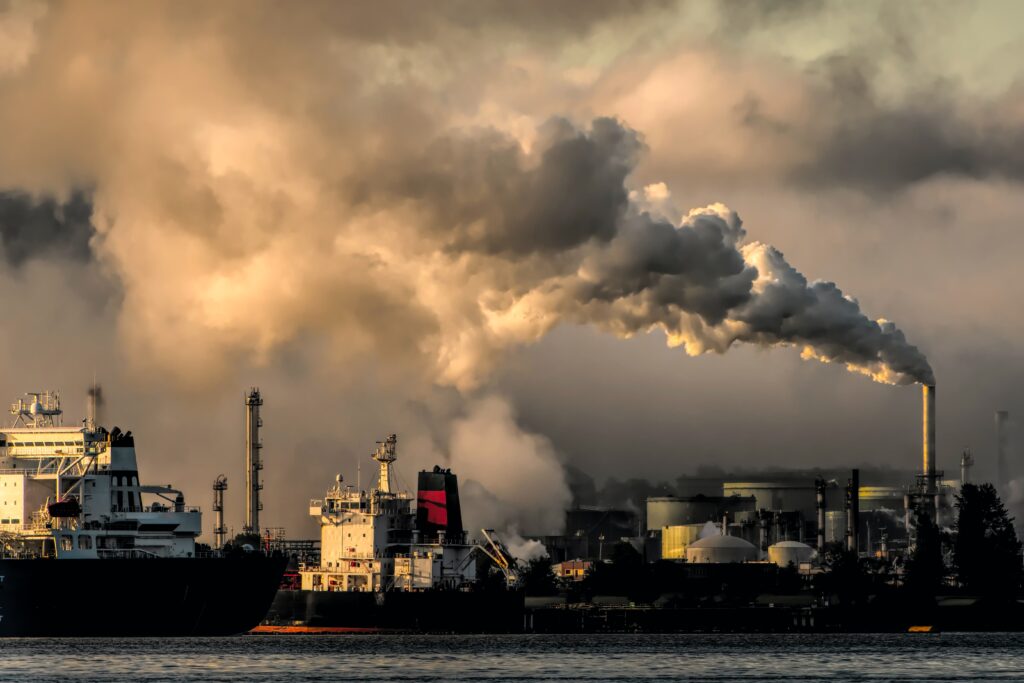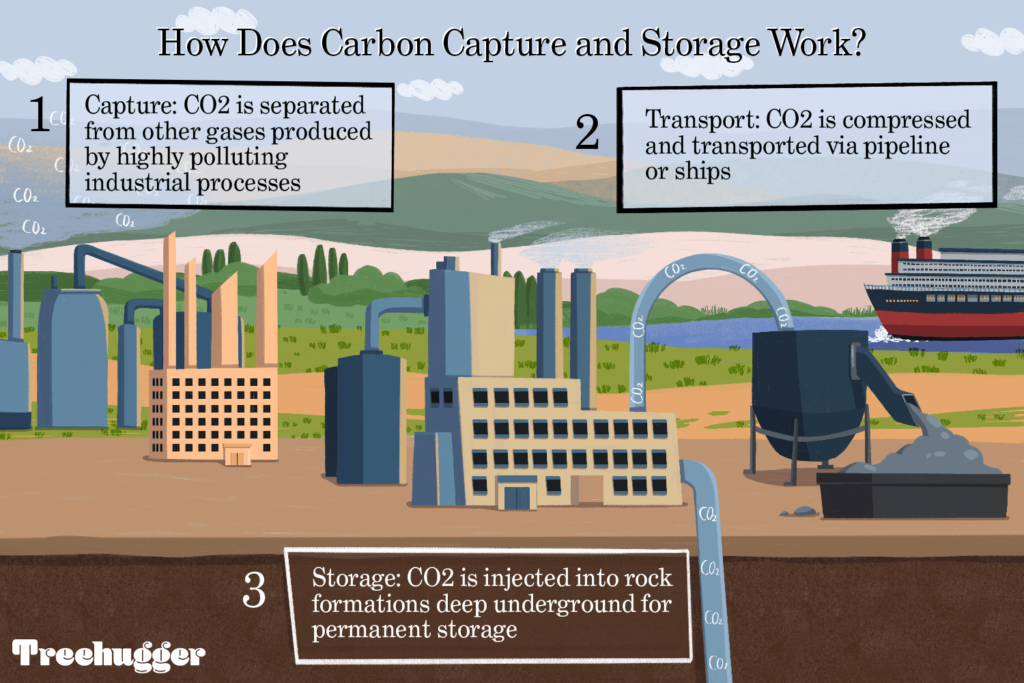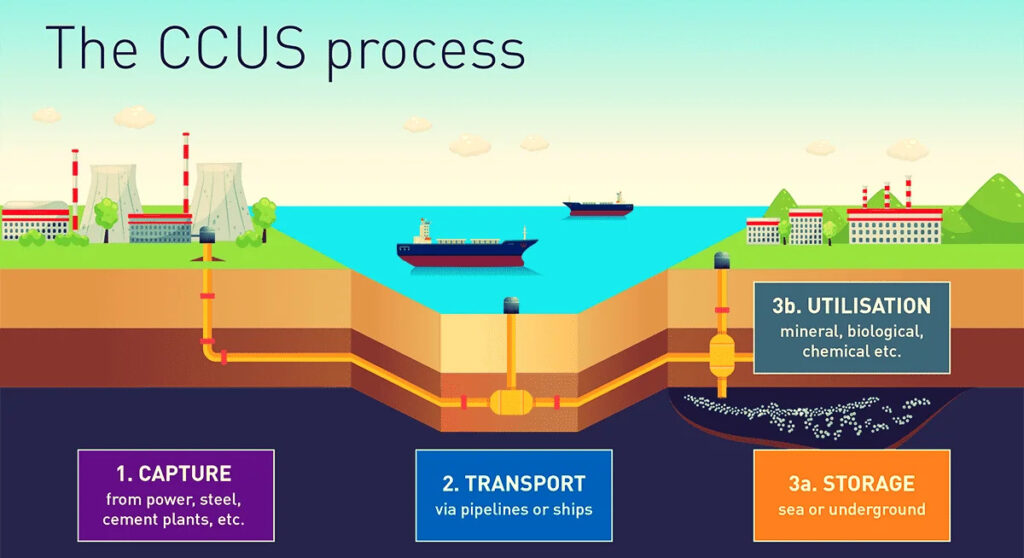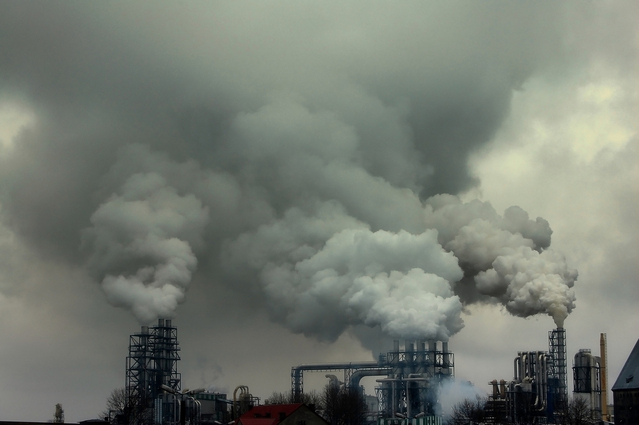
What is Carbon Capture and Storage?
Carbon capture and storage (CCS) is the capture of carbon dioxide (CO2) from industrial practices such as steel and cement production as well as the burning of fossil fuels. The way it works is that:
- CO2 is first separated from other gasses
- CO2 is compressed and transported through pipelines, ships, or by road
- CO2 is buried deep underground in rock formations for permanent storage

Economics
Adding carbon capture and storage equipment to a plant is a costly venture. It’s also an energy-consuming one as it requires electricity to operate, which can hinder a plant from its competitors. In fact we see Norway, a country who was going to implement a carbon capture plant at its Mongstad refinery, ditch this plan due to high costs. The problem with CCS is giving companies an incentive to utilize CCS, even when it’s an expensive process. Once you bury the carbon underground, there is no profit made for that company. This is where carbon capture and storage’s sibling, carbon capture usage and storage may help.
Carbon Capture Usage and Storage
Carbon capture usage and storage (CCUS) is when some of the captured carbon dioxide is reused in industries where it is vital. For example, soda is fizzy because of carbon dioxide. It can also be used in products like fertilizer and plastics. This gives carbon capture an incentive and it presents a more viable business model for certain companies who hesitate to implement this expensive technology.

CCS safety
With CO2 being stored underground we can’t help but ask ourselves, is it safe? Should we store this chemical compound into the depths of our earth when we are trying to eliminate it from our earth in the first place? Well studies have shown that we can store CO2 safely underground for thousands of years. In fact, natural pockets of CO2 have been found and have existed for millions of years. Because of this, ExxonMobil plans to store CO2 beneath the Gulf of Mexico where scientists believe is large enough to store 500 billion metric tones of CO2.
Examples of CCS today
Century natural gas processing facility in West Texas
Occidental Petroleum and Sandridge Energy sought to build this CCS facility in 2008 with $1.1 billion. This facility captures CO2 that was used for Occidentals enhanced oil recovery projects in the Permian Basin. The CO2 is captured and delivered via pipeline to an industrial hub in Denver City. This facility has captured 8.4 million tones of CO2 a year.

Shute Creek gas processing plant in Wyoming
Owned by ExxonMobil, this CCS facility captures 365 million cubic feet of CO2 a day, which is like removing 1.5 million cars from the road. The CO2 captured by this facility comes from the natural gas streams from the LaBarge gas field as well as other fields in Wyoming. The CO2 is then separated from other components at the LaBarge plant. In 2010, ExxonMobil expanded the Shute Creek gas processing plant for $86 million by adding Controlled Freeze Zone (CFZ) technology. This technology freezes out and melts CO2 as well as separates it from hydrogen sulfide, methane, etc.

Great Plains Synfuels plant in North Dakota
This facility is owned by Dakota Gasification and it cost $2.1 billion. This facility captures and compresses 3 million tones of CO2 a year. The CO2 captured is from a coal gasification process which produces natural gas from coal. The CO2 is transported via pipeline to the Weyburn and Midale oil fields for enhanced oil recovery operations.

Will CCS help fight climate change?
While CCS can help to fight climate change, it is not running at the capacity it has to be running at in order for it to truly be successful. For example, in 2021 there was 40 million tones of CO2 captured with CCS. However, for the world to reach net zero emissions of CO2, CCS would need to capture 1.7 billion tones of CO2 by 2030. This would be a 40 times increase in the next seven years. If we really do ramp up CCS, it is estimated that CCS could capture 90% of carbon emissions from the industrial use of fossil fuels.
Bottom line
This is an interesting example of green technology because it really makes us think outside the box on how to get rid of our CO2 emissions. Many experts truly believe that CCS will be crucial to mitigating the risks of climate change as it will play a key-role in a lower-carbon future. President Biden has also talked about CCS where he believes that it will benefit both the economy and the environment. Overall, hopefully we see CCS as one of many technologies that will stop climate change and bring our carbon emissions to zero.
We at AI Tech Spark will keep posting articles discussing green tech-related topics in more depth. We will also post other tech-related topics. Thank you so much for reading and please leave a comment on any questions you have!